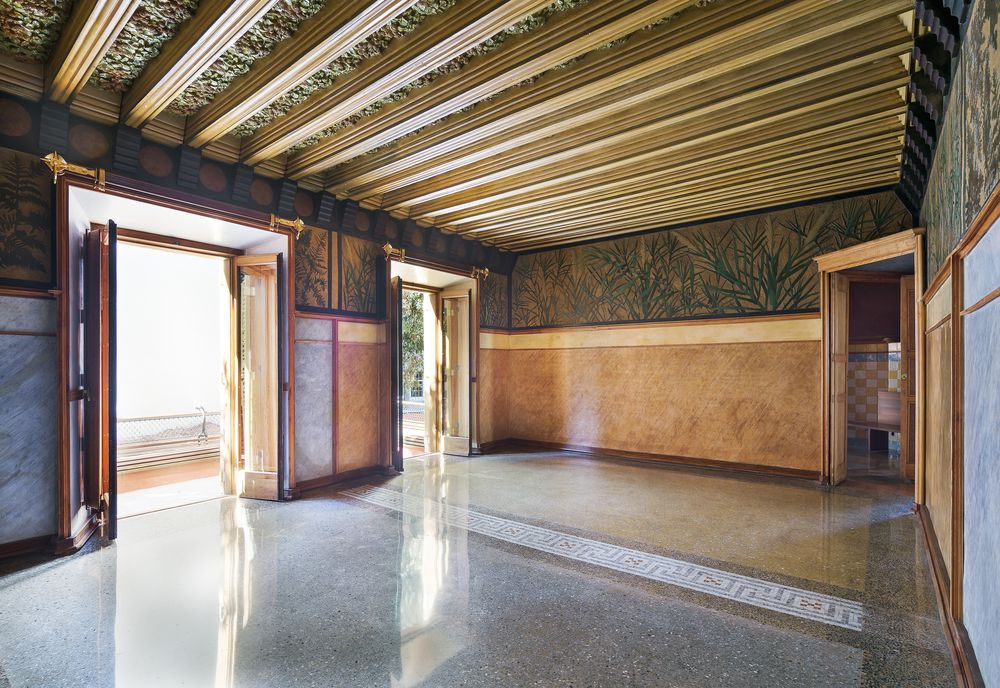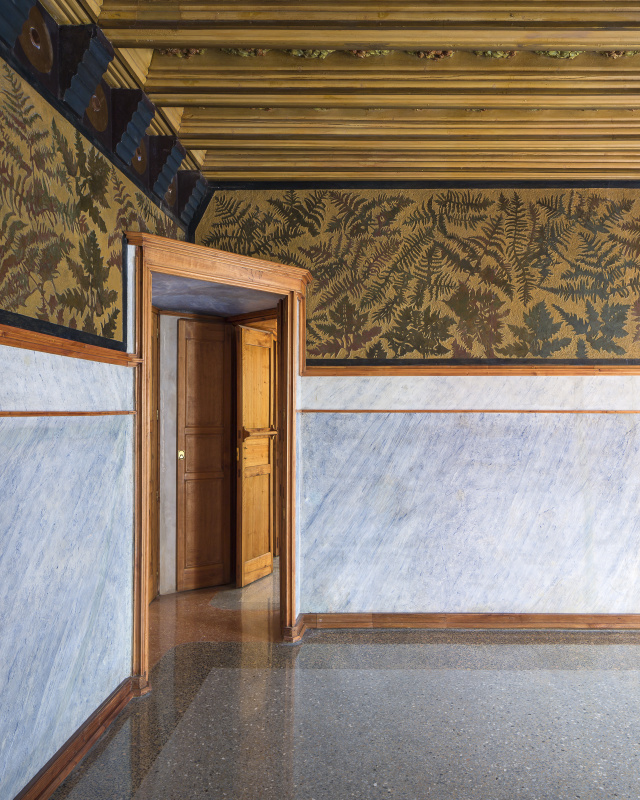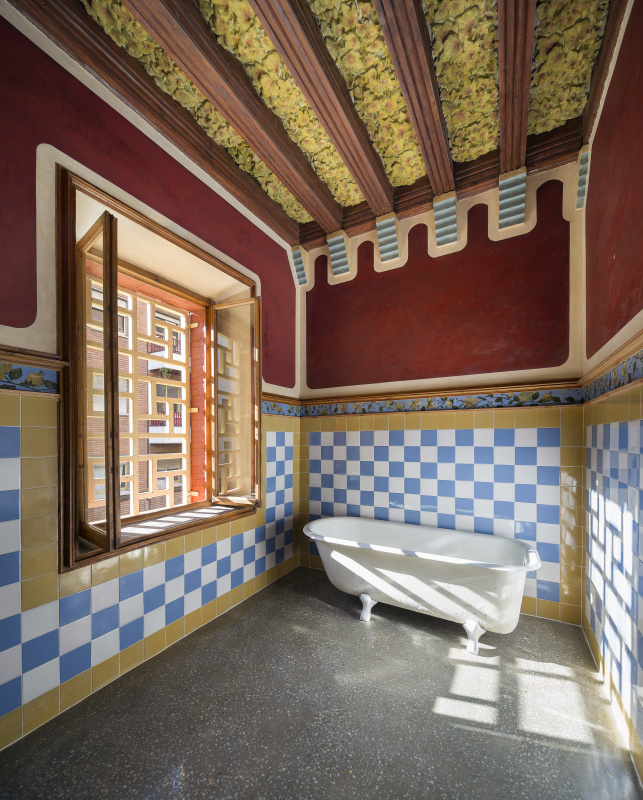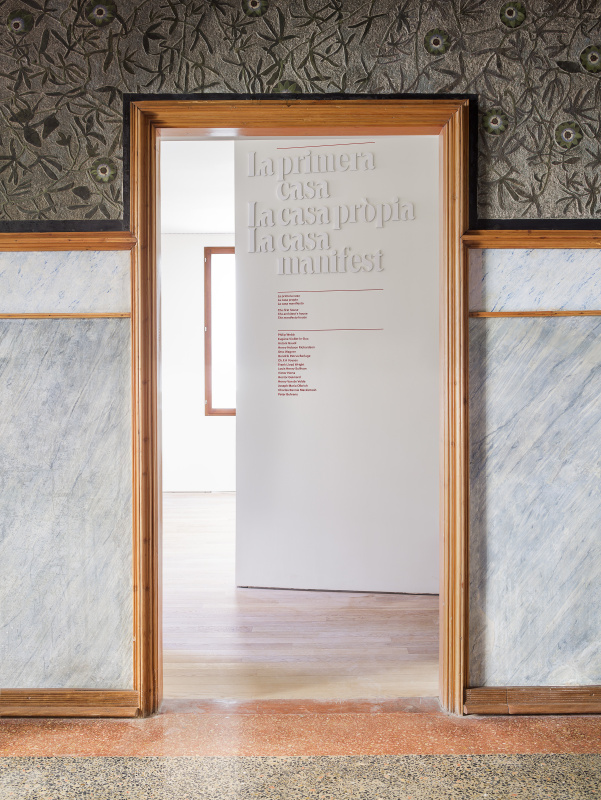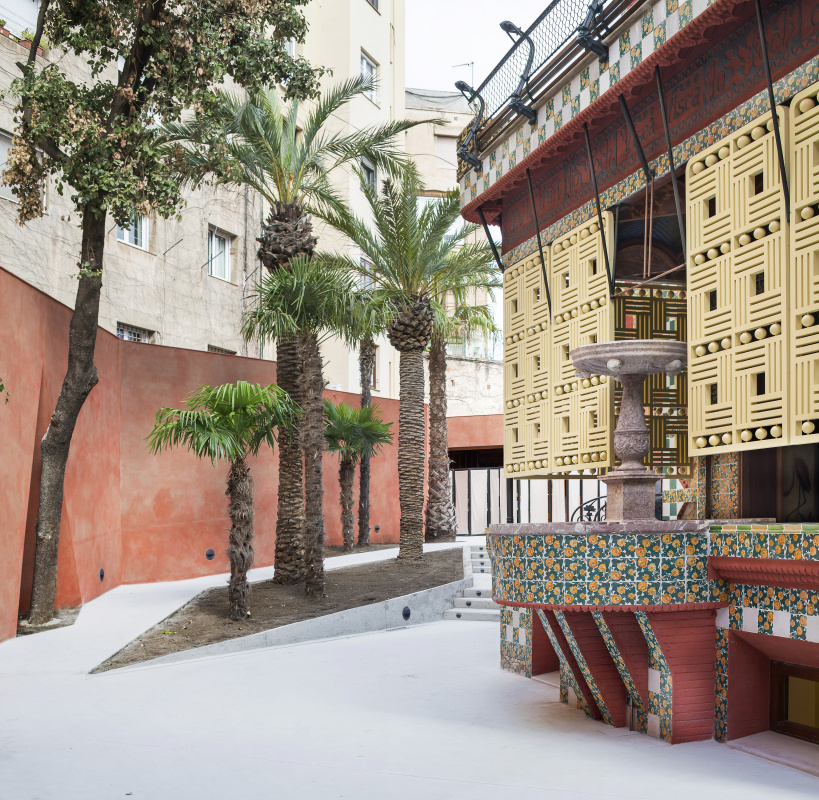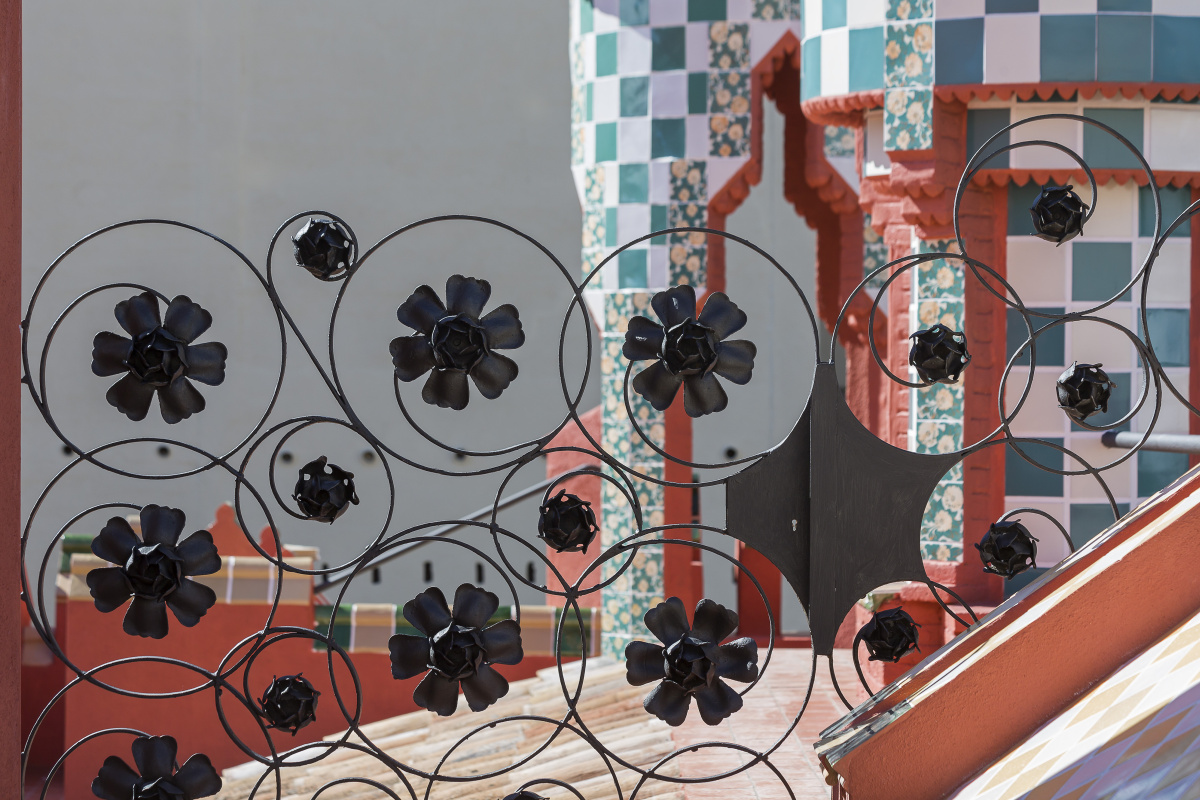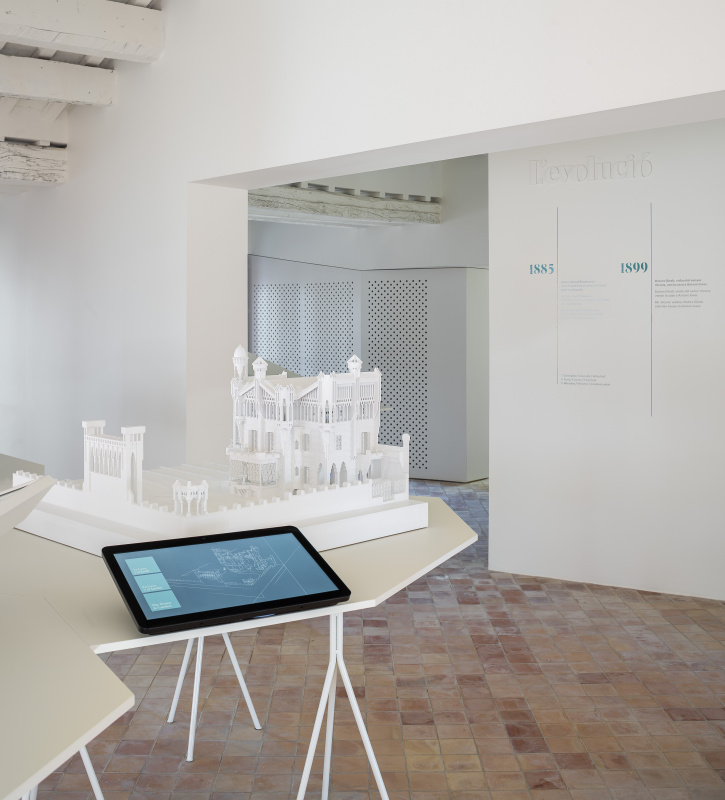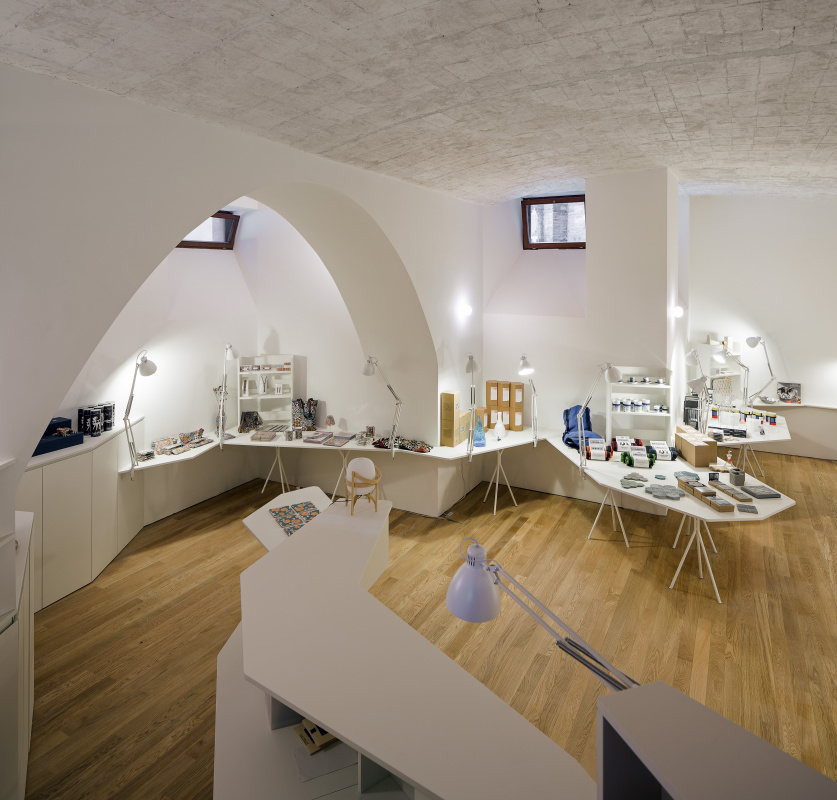

Barcelona’s Casa Vicens (1883−1885), declared a World Heritage Site by UNESCO in 2005, is a unique oasis of calm with an Oriental and Moorish flavour, covered with spectacular green and white tiles.
It was built by a young Gaudí as a family summer house commissioned by Manel Vicens y Montaner (1836−1895), a stock market dealer.
In 1925, the Jover family, who bought the house in 1899, commissioned architect Joan Baptista Serra de Martínez, a friend of Gaudí', to expand the free-standing property—with Gaudí's blessing. Further changes were made between 1935 and 1964.
The house was a family home until 2014, when it was bought by the Andorran financial institution MoraBanc, which made plans to open it to the public.
Left: Antoni Gaudi’s Casa Vicens in Barcelona, Spain. Photo: casavicens.org
Particularly striking is the cast iron gate at the entrance to the estate, which features representations of palm tree leaves and the carnations that Gaudí adapts as an ornamental feature for the ceramic tiles of the facade.
Here and below: The interior of Casa Vicens. Photography by Pol Viladoms, © Casa Vicens, Barcelona 2017
Fifteen lavishly decorated rooms by Gaudí have been restored with input from the descendants of its original tenants as well as extensive archival research. Slight modifications have been made to turn the building into a functioning museum.


The old photo of the building.
The garden, once surrounded by the mansion, was badly damaged in 1925 due to the extension of the Carolines street, where the house is located, and then in 1946 and 1962 — after selling part of the land. A fragment of a fence, a rotunda and a fountain with a cascade were lost. In addition, the previous owners of the building made changes to its design. But still the monument of architecture remains "the house of Gaudi."

While the ground floor is now a visitors' entrance, the space on the first and second floors has been adapted for the permanent collection, temporary exhibitions and short-term art installations, where visitors can discover more than 130 years of history at Casa Vicens, its social, cultural and artistic context, and the essential manifesto of the work of this genius and how he anticipated Modernisme.
The permanent collection includes audio-visual materials about the history of Casa Vicens and Gaudí's life, a collection of furniture made by the architect, as well as 32 oil paintings by the Spanish painter Francesc Torrescassana i Sallarés.
Left: Photography by Pol Viladoms, © Casa Vicens, Barcelona 2017

Gaudí invented and developed the interiors of each of the 15 rooms. The pattern of palm leaves to the fence, as well as tiles decor with orange flowers — marigolds, — is a figment of his imagination. It is curious that these tiles were made at the brick factory of Manuel Vicenç, thus serving as a promotion for the customer’s business and the first owner of the house.
Photo: Alamy Stock Photo. www.theguardian.com

An ordinary ticket costs 16 euros, preferential — 14, children up to 7 years old visit for free.
Address: Barcelona, Carrer de les Carolines 18−24.
Website: www.casavicens.org
Title illustration: photo by Pol Viladoms.






